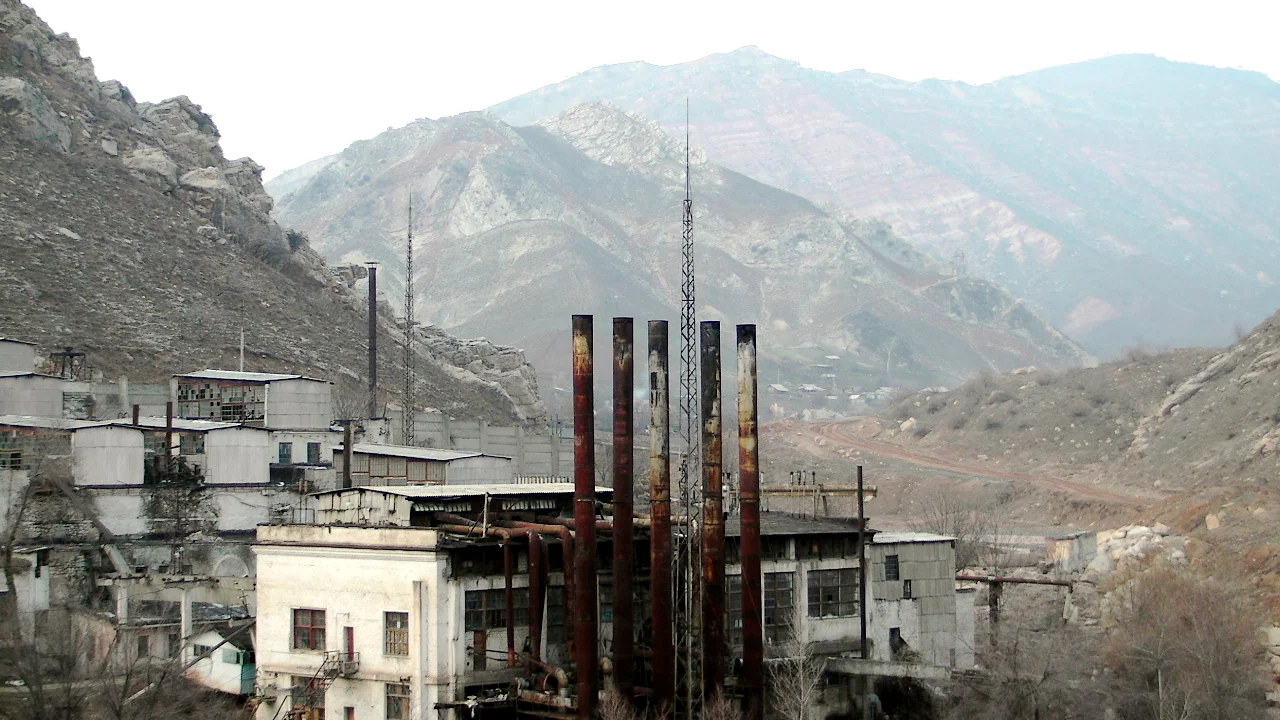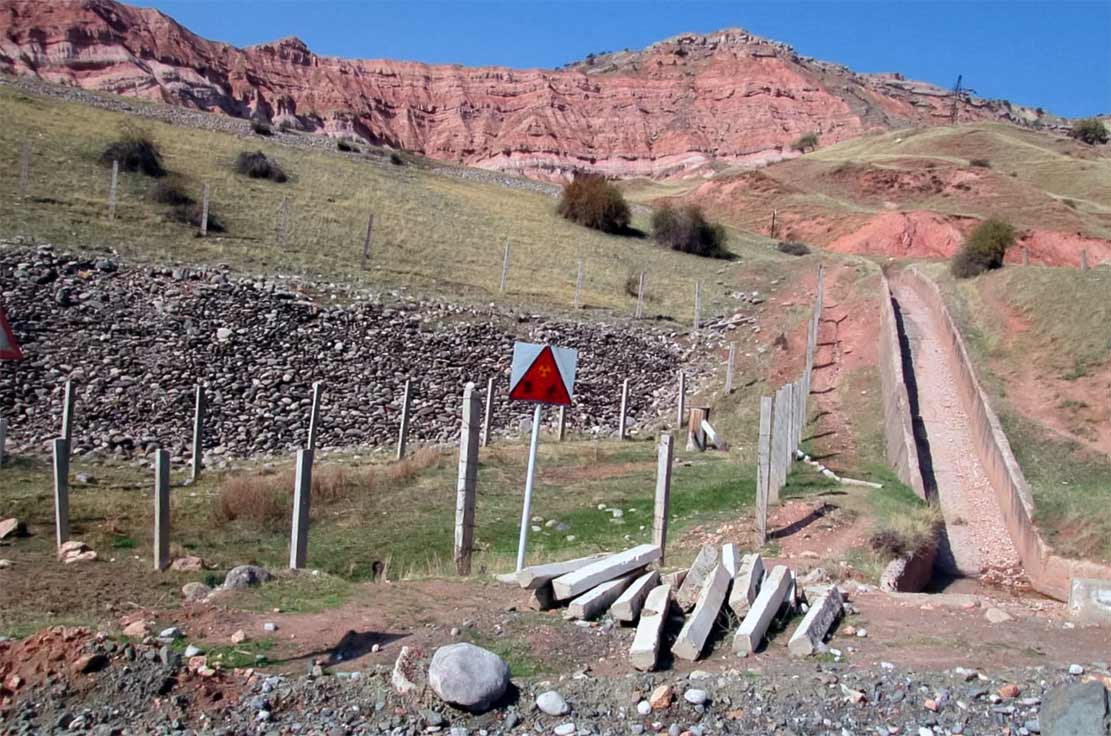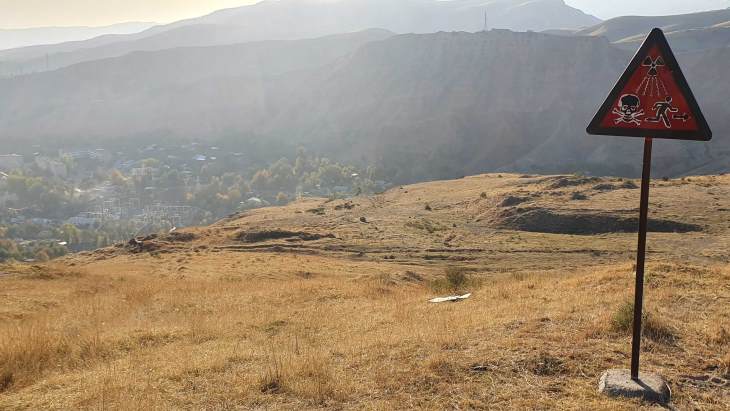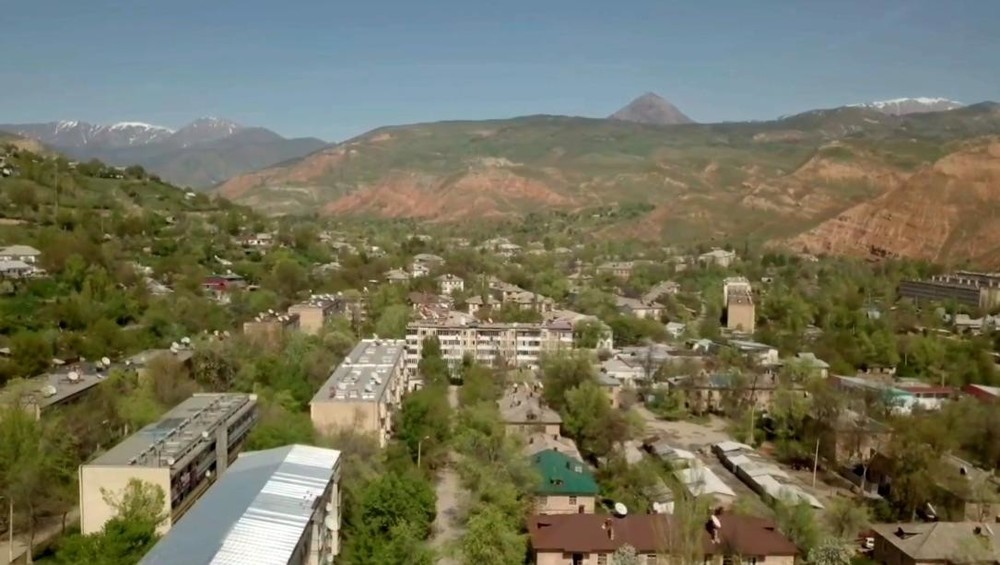- hot-spots
- waste
- Kyrgyzstan
- Groundwater pollution with radioactive waste in Mailuu-Suu, Kyrgyzstan
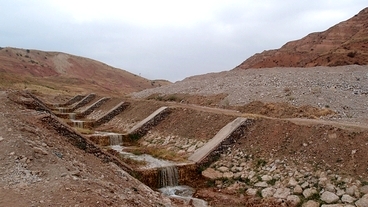
Groundwater pollution with radioactive waste in Mailuu-Suu, Kyrgyzstan
Kyrgyzstan
last update:
2 months agoProblems
Groundwater radioactive hotspot in Mailuu-Suu, Kyrgyzstan
Residual radioactive waste located in the Kyrgyz town of Mailuu-Suu in the Fergana Valley is causing mass contamination of rivers and agricultural land. It has serious health and economic consequences for people in Kyrgyzstan and Uzbekistan. This has caused conflict between the Central Asian countries. Uranium was first discovered in the region in 1933, and within 20 years, 10,000 tons of uranium oxide were mined at Mailuu-Suu. Residues of radioactive waste in southern Kyrgyzstan currently pose a serious environmental threat to densely populated parts of the Ferghana Valley, home to about 14 million people.
The uranium burial problem has been going on for almost 60 years
Industrial-scale uranium mining began in Mailuu-Suu during the Soviet Union in 1946 and continued until 1968. During this time, Mailuu-Suu also processed uranium ore from Europe and China. As a result, the small town of 24,000 people is now surrounded by approximately 3 million cubic meters of uranium waste, which remains in 23 tailings and 13 landfills. These sites contaminated the Mailuu-Suu River, a major tributary of the Syr Darya that flows through Kyrgyzstan and into Uzbekistan, carrying radioactive waste into the densely populated Ferghana Valley. The biggest problem is that earthquakes, landslides, and heavy rainfall have increased in recent years, destroying uranium tailings storage facilities along the river and mountain slopes, and contaminating the surrounding areas.
Destabilization of the waste repository will lead to an ecological catastrophe
According to state surveys, there are 92 radioactive and toxic repositories in Kyrgyzstan today. The most dangerous of them is the Mailuu-Suu uranium sites since numerous dangers threaten the tailings. If these tailings were destabilized, they could have catastrophic environmental consequences for Kyrgyzstan and the neighboring countries of Uzbekistan and Kazakhstan, as radioactive waste would contaminate the river and the soil irrigated farmland around it. Several international organizations worked to prevent further disasters in Mailuu-Suu. The World Bank has allocated more than 11 million US dollars to clean up uranium tailings. In 2015, the European Commission launched an initiative to restore the most dangerous places in Kyrgyzstan, Tajikistan, and Uzbekistan. However, pollution remains and Central Asian countries must cooperate to prevent further environmental disasters in the Fergana Valley, as well as reduce economic damage and resolve political issues.
What are the dangers of landslides?
There are more than 200 landslides around Mailuu-Suu. In the 1940s, such a threat was negligible, but since 1954 landslide activity has increased due to increased rainfall. Landslides at Mailuu Suu occurred several times in 1988, 1992, and 2002, damaging infrastructure and altering water flow. The most dangerous landslide is Koi-Tash, which occurred in 2017 and could block the riverbed and spread radioactive contamination along the river. According to the Ministry of Health of the Kyrgyz Republic, the cancer rate per 100,000 here was the highest in the country until 2013, when it dropped from more than 100 to 89. Lung, stomach, and breast cancers were found to be the most common. types of cancer in Mailuu-Suu. Another study found that the rate of certain types of digestive cancers was twice as high among people who drank river water as compared to those who did not. However, further research is needed to obtain conclusive results.
Gallery
6Timelines
2023
May 16
Radioactive substances are currently stored in 23 tailings ponds (total volume of about 2 million cubic meters) and 13 mining debris heaps (total volume of about 0.9 million cubic meters situated along the Mailuu-Suu River, which feeds into the Syr Darya River. Some of these tailings have already been damaged by landslides, mudslides and floods, and some are in high-risk areas where major landslides are expected. The ERA grant agreement - which will allow the commencement of seven years of remediation works - was signed on 16 May by Boobek Ajikeev, Kyrgyz Minister of Emergency Situations, and Balthasar Lindauer, director of the EBRD's Nuclear Safety Department. The grant of EUR23 million, the largest since the establishment of the ERA, will help to stabilize and cover the radioactive tailings located along the Mailuu-Suu River. The planned soil covers will be 2 meters thick. About 350,000 cubic meters of tailings need to be relocated to a safe disposal site. The project will also finance the rehabilitation of contaminated land and water resources in the area. When recultivating the tailings in Mailuu-Suu, it is necessary to take into account what to do with the dust that will rise into the air from the work performed. Environmental activist Vlad Ushakov warned about this in an interview with Vesti.kg, commenting on the work that had begun in the Jalal-Abad region to move hundreds of thousands of cubic meters of land to a safe burial place.
2022
June 29
Four major landslides have the potential to directly or indirectly affect uranium ore tailings along the Mailuu-Suu valley. The increased seismic activity observed in the Kyrgyz Republic, with 3,000 recorded earthquakes (10 to 20 magnitude) per year, increases the risk of landslides. As of 2022, uranium waste and tailings storage facilities are still found to be inadequately secured and located near populated areas. Storages are exposed to precipitation and other environmental influences, requiring annual maintenance. Leaching of toxic metals and radioactive materials contaminates water, soil, and vegetation, and the river water can also be heavily contaminated by landslides that push tailings downstream into the river channel or block the river and flood the tailings upstream.
2020
September 03
An epidemiological study of cancer in Mailuu-Suu showed that 197 people died of cancer and 235 new cases of cancer were diagnosed in the city. This is explained by the high concentration of radon in the air. The rate of cancer per 100,000 population here was the highest in the country until 2013, when it dropped from more than 100 to 89, according to the Kyrgyz Ministry of Health. Another study found that the incidence of some types of digestive cancers was twice as high among people who drank river water compared to those who did not. However, further research is needed to get conclusive results.
2018
July 09
Blacksmith created new water filters and provided technical and logistical assistance in replacing water systems where possible. Blacksmith also held special training seminars for school and café workers, as well as 11 training sessions for school children: the goal was to instill basic radiation hygiene practices such as aggressive hand washing, rinsing, and dusting, using water filters, and grinding meat and vegetables before storage to wash and remove radioactive contamination more thoroughly. Uranium and other metal content in drinking water tested in schools and hospitals decreased by 48-65%. Internal irradiation of residents of all age groups (mainly due to radioactive materials embedded in walls and penetration of radon gas) decreased by 38-55%.
2017
September 19
The region has high seismic activity, causing frequent landslides and mudslides. Some storage facilities located dangerously close to the river risk polluting the watercourse that supplies water to several million people in Kyrgyzstan and Central Asia. Several incidents have already been reported. Authorities have instituted protective measures in recent years, but they are not enough.
2016
December 13
The World Bank invested US$11.76 million in the Disaster Risk Reduction Project in Mailuu Suu, which started in 2004 and ended in 2012. The World Bank's objective focused on minimizing “human, livestock, and riverine flora and fauna exposure to radionuclides associated with abandoned uranium mine tailings and waste rock dumps in the Mailuu-Suu area; as well as increasing the effectiveness of emergency management and the response of national and subnational authorities and local communities to disaster situations." However, local residents, weary of the effects of the uranium legacy, believe that health problems and birth defects still exist in the area. The 2016 analysis of the health of local women and children in Mailuu Suu showed that they were 180 children with disabilities in 24,000 Mailuu-Suu. At the same time, only 165 disabled children lived neighboring the Suzatsky district with a population of over 240,000. So, in the Suzatsky District, whose population is ten times larger than Mailuu-Suu, there are fewer children with disabilities. Indeed, “the public health effects of radiation and radionuclides in Mailuu Suu were reflected in higher rates of birth defects of 5.12 percent; miscarriages — 12.1%; the stillbirth rate is 1.25 percent” than anywhere else in the country, according to a study by the Institute of Medical Problems of the National Academy of Sciences of the Kyrgyz Republic.
2013
December 21
In December 2013, the United Nations General Assembly called on the international community to assist Central Asian states in a regional cleanup of toxic sites, but local officials complain that progress has been slow. Despite widespread mistrust, both officials and donors consider one pilot project a success. Between 2010 and 2012, a World Bank-led venture moved one of the most unstable of the 23 Mailuu Suu tailings ponds to a safer location and reburied it, for $8.4m (£5.3m). According to estimates by the Ministry of Emergency Situations, moving the remaining tailings to the city with the greatest risk will cost another 50 million dollars.
2009
October 15
The government of the Kyrgyz Republic recognizes the danger of unauthorized access to radioactive waste storage facilities and abandoned mines by scavengers who "open up radioactive waste storage facilities and infiltrate abandoned uranium mines and underground workings to retrieve contaminated metal, electrical equipment, and cables. There have also been recorded cases of smuggling that result in radioactive materials appearing in the Kyrgyz Republic, although their source is not always within its borders.
2008
February 05
Late last year, the New York-based environmental organization The Blacksmith Institute listed Mailuu-Suu in Kyrgyzstan as one of the 30 most contaminated sites in the world. The Kyrgyz government has sought international help to protect the crumbling radioactive bunkers from exploding in the event of an earthquake or flood. In a worst-case scenario, radioactive materials could enter the fast-flowing Mailuu-Suu River and be carried downstream across the border into the densely populated region of Uzbekistan, less than 50 miles away, contaminating the water supply of more than 2 million people.
2002
May 19
A massive landslide has blocked the Mailuu-Suu River and threatens to flood another toxic waste dump. Environmentalists raise concerns that the combination of unprotected radioactive waste and the region's high seismic activity threatens to contaminate drinking water throughout the Fergana Valley, a fertile and densely populated area with hundreds of thousands of residents that stretches across Kyrgyzstan, Uzbekistan, and Tajikistan.
1958
April 15
As a result of rains and high seismic activity, the alluvial dam in tailing pond No.7 at Mailuu-Suu collapsed, dumping more than 400,000 cubic meters of radioactive waste into the Mailuu-Suu River, which then spread 30-40 kilometers downstream into irrigated farmland in Uzbekistan. Radioactive contamination of the river, surrounding soil, and vegetation caused serious health problems and deaths.
